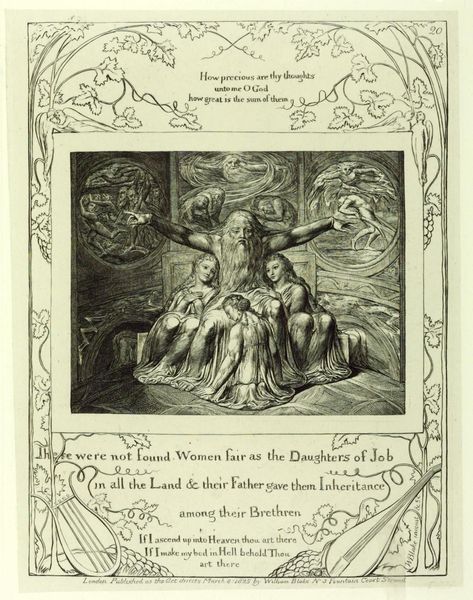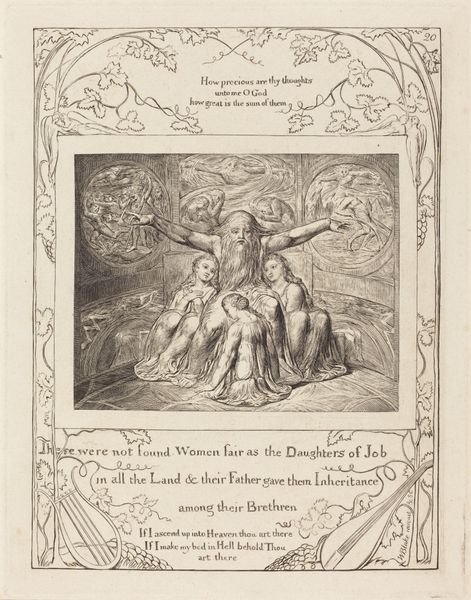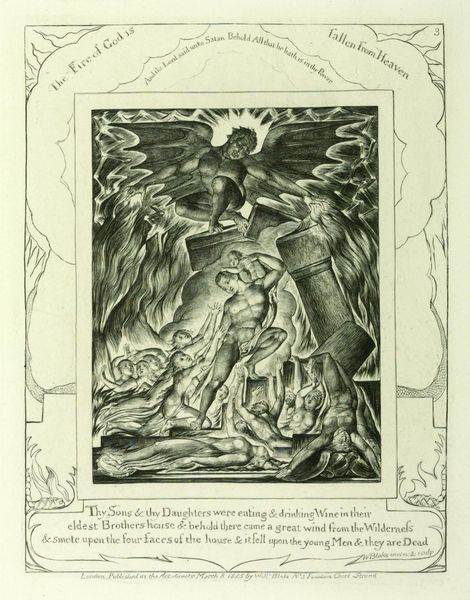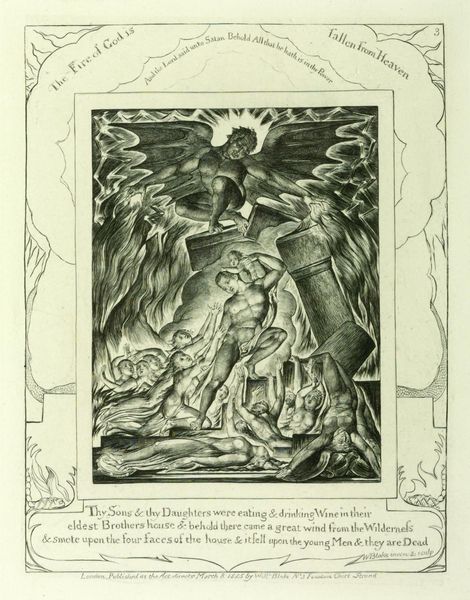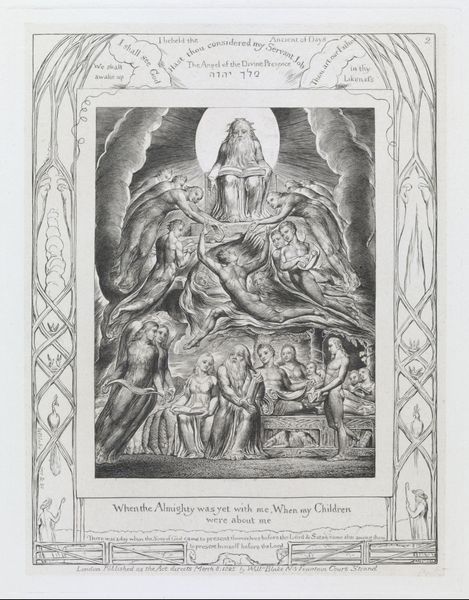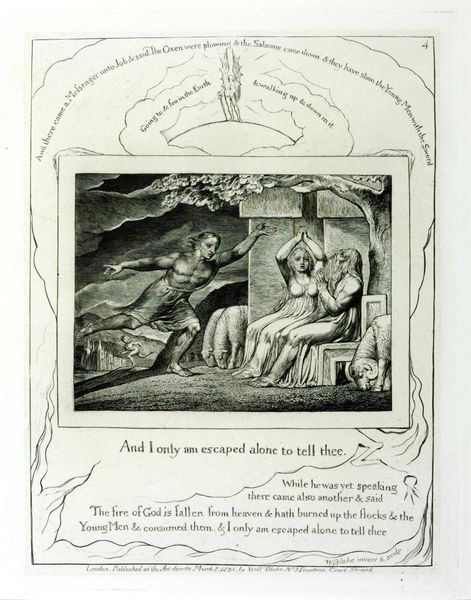
Dimensions: image: 199 x 151 mm
Copyright: NaN
Curator: Look at this engraving, "Job and his Daughters," by William Blake. Editor: There's an undeniable sense of tenderness amidst the harsh lines of the engraving, isn't there? The figures seem both vulnerable and strong. Curator: Yes, Blake's process of etching lines creates such a unique texture. Notice the biblical context; his daughters are described to be "fair" and they inherited among their brethren. This was a patriarchal context in which Blake questioned societal norms. Editor: Absolutely, and one cannot ignore the medium of print, specifically its role in circulating such radical ideas at the time. Were it a painting, it would not have the same ability to distribute these notions about society to a wider audience. Curator: Precisely, its accessibility allowed the piece to be disseminated beyond the traditional art world. It reflects the political and social climate of the time. Editor: Blake's ability to question hierarchies, both social and artistic, through the humble medium of engraving is truly powerful. Curator: It certainly makes you think about the relationship between the material and the message, doesn't it?
Comments
tate 8 months ago
⋮
http://www.tate.org.uk/art/artworks/blake-job-and-his-daughters-a00031
Join the conversation
Join millions of artists and users on Artera today and experience the ultimate creative platform.
tate 8 months ago
⋮
This is an illustration to chapter 42, verses 13-15 of the Book of Job. The main title comes from verse 15. The names of Job's daughters were Jemima, Kezia and Kerenhappuch. They are all seen against a background which depicts some of the trials Job has passed through. On the left is the destruction of his servants by the Chaldeans, described in Job, chapter 1, verse 17. On the right is the destruction of Job's ploughmen, described in chapter 1, verses 14-15. Behind Job's head God appears in the whirlwind. Blake treated this subject in his Job series and the print is shown nearby. Gallery label, August 2004
